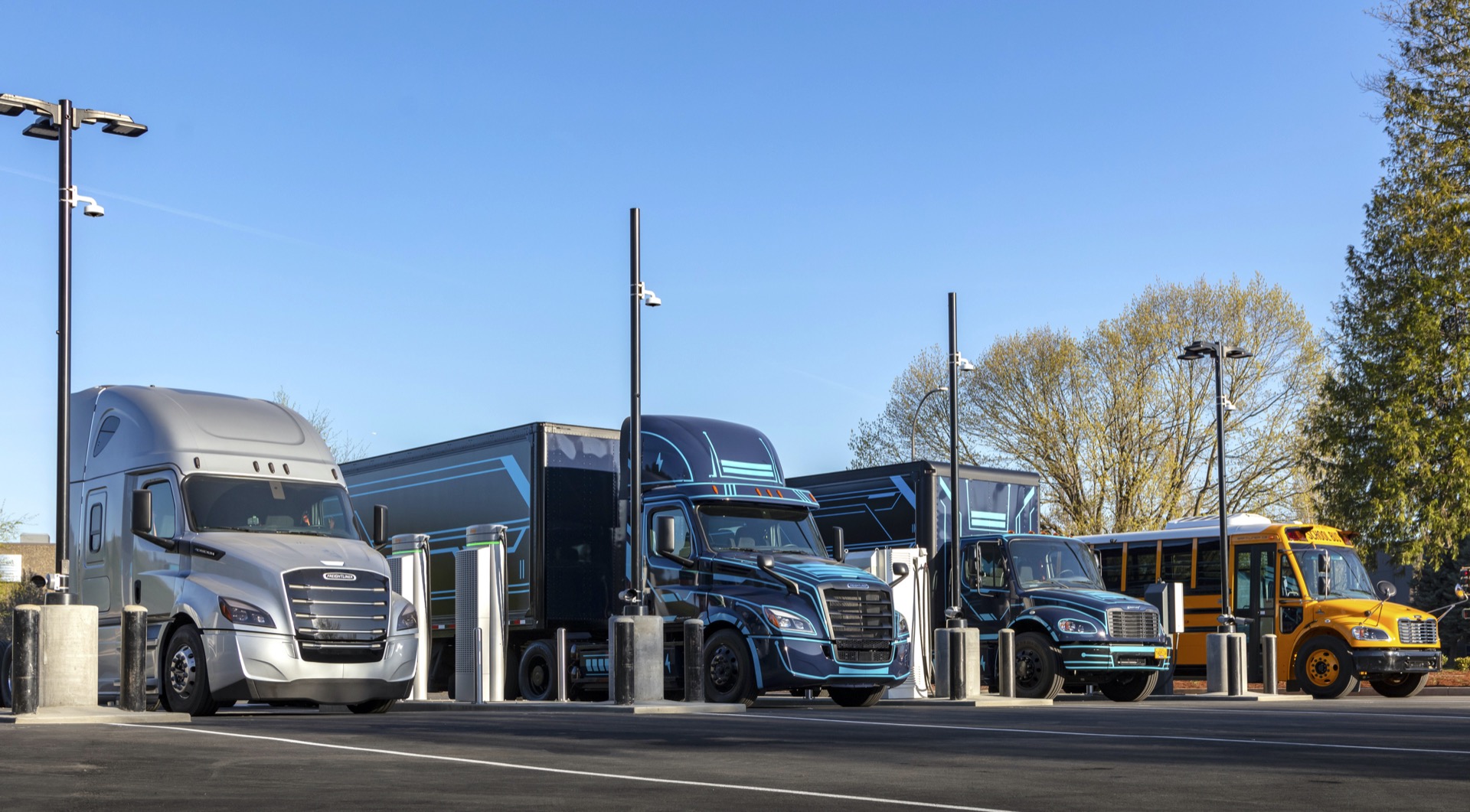Fully electrical heavy-duty vehicles and buses aren’t going to be broadly accepted till they will cost, because the requirements group CharIn places it, “within a reasonable time.”
This final week marked one other vital step, with the official inaugural demonstration (or simulation), at EVS35 in Oslo, of the higher-power {hardware} supposed for that: the Megawatt Charging System (MCS).
CharIn is the standards-oriented commerce group initially shaped by the German automakers to refine and spur the adoption of the Combined Charging System (CCS).
First time I see a MCS charging plug!
(nonetheless prototype although and design nonetheless not finalized) by @ABBelec
Huge + and – terminals, floor, CP and PP pins and two further…(for automation?)
MCS commonplace upto 3.75MW energy for vehicles and buses. #EVS35 pic.twitter.com/7gYO20RKl7— Roberto di Gento (@robertvg) June 12, 2022
With battery packs for long-range electrical semis anticipated to be within the a whole bunch of kilowatt-hours, fast charging will doubtlessly take rather more than the 350-kw energy that’s the higher finish of right now’s CCS passenger-vehicle connector. As CharIn summed, extra present requires extra copper and bigger conductor cross sections.
To that, MCS will use a single conductive plug, able to delivering a most of three.75 MW, and it will likely be “cyber-secure” and OSHA, FCC, and UL licensed. There shall be an on-handle override change, and cost ports shall be at about hip peak on the left aspect of the car—providing the potential to be automated sooner or later. It will supply bidirectional (V2X) charging functionality.
Although, as we dare level out, if EVs with a small tenting trailer—or GMC Hummer EVs—have bother maneuvering into the everyday Electrify America charger, the thought of an MCS-equipped RV attempting to cost up there’s a next-level hurdle.
Electric Island – Daimler Trucks North America and PGE – Portland OR
One of the primary megawatt-capable charging stations to supply the MCS connector is Portland’s Electric Island website, developed by PGE and Daimler Trucks North America. It’s prepared for a variety of professional quality electrical vehicles.
Megawatt charging stations for vehicles current even harder challenges for siting, as a result of they not solely have to make room for the vehicles however be at some extent within the grid that may help the facility draw (10 MW or extra) of a semiconductor plant.
Those are among the many robust questions {that a} group has tackled in laying out the plan for a “West Coast Clean Transit Corridor,” taking a look at the place such stations could be sited and tips on how to get began.
Another template for which may be a megawatt-level truck cease deliberate by the startup WattEV in Bakersfield, California, aiming for 40 charging stalls and 25 MW.

WattEV electrical truck cease rendering
The closing requirements have been anticipated for a very long time. CharIn reached a consensus within the design of inlets and connectors in September 2020. From that time—or earlier within the venture—it was decided that MCS could be reverse-compatible with CCS. CharIn maintains that automobiles with MCS also needs to “be able to charge from the existing CCS infrastructure”—merely with some sort of plug adapter, we’d assume.
Tesla has additionally been a minimum of considerably allied on this effort for its upcoming Semi, noting that it’s seeking to deploy megawatt-charging infrastructure with different events, which we assume would converge on this identical commonplace.
The commonplace, which we’ll dive into in additional depth quickly, ought to assist present extra predictable charging conduct versus what truckmakers have within the interim resorted to—offering a number of CCS ports.
MCS focuses on Class 6, 7, and eight industrial automobiles for that “reasonable” cost time. But as CharIn factors out, it should assist additional not simply electrical vehicles but in addition heavy-duty marine, aerospace, mining, and agriculture functions—in addition to VTOL (vertical take off and touchdown) automobiles and different air vessels.
Source: www.greencarreports.com

